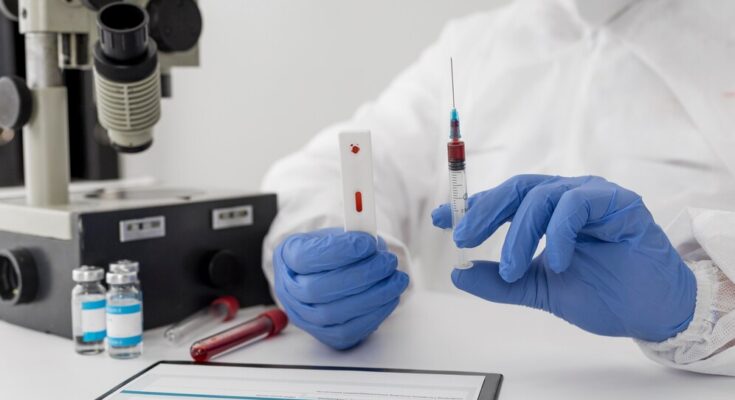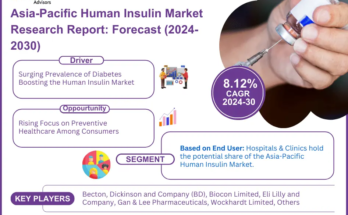The Minimal Residual Disease Testing by The Business Research Company provides market overview across 60+ geographies in the seven regions – Asia-Pacific, Western Europe, Eastern Europe, North America, South America, the Middle East, and Africa, encompassing 27 major global industries. The report presents a comprehensive analysis over a ten-year historic period (2010-2021) and extends its insights into a ten-year forecast period (2023-2033).
Learn More On The Minimal Residual Disease Testing Market:
https://www.thebusinessresearchcompany.com/report/minimal-residual-disease-testing-global-market-report
According to The Business Research Company’s Minimal Residual Disease Testing, The minimal residual disease testing market size has grown rapidly in recent years. It will grow from $1.41 billion in 2023 to $1.61 billion in 2024 at a compound annual growth rate (CAGR) of 14.4%. The growth in the historic period can be attributed to advancements in cancer research, treatment monitoring needs, clinical evidence, regulatory support, patient outcome improvement.
The minimal residual disease testing market size is expected to see rapid growth in the next few years. It will grow to $2.62 billion in 2028 at a compound annual growth rate (CAGR) of 12.9%. The growth in the forecast period can be attributed to increasing cancer incidence, therapeutic advancements, precision medicine trends, shift toward early detection, healthcare system integration.. Major trends in the forecast period include integration of liquid biopsy approaches, focus on early detection of relapse, expansion of mrd testing in clinical trials, increasing adoption in pediatric oncology, collaborations for research and development.
The increasing prevalence of cancer is expected to propel the growth of the minimal residual disease testing market going forward. Cancer refers to a condition when a few of the body’s cells grow out of control and spread to other bodily regions. Cancer stages are primarily detected through minimal residual disease testing, which is a very sensitive method to detect cancer cells in the human body. It helps cancer patients prevent the disease at an early stage, boosting the minimal residual disease testing market. For instance, in 2022, according to the reports shared by the American Cancer Society Inc., a US-based nonprofit organization, approximately 1.9 million fresh instances of cancer are projected to be diagnosed, leading to an estimated 609,360 cancer-related fatalities in the United States in 2022. Therefore, the increasing prevalence of cancer is driving the growth of the minimal residual disease testing market.
Get A Free Sample Of The Report (Includes Graphs And Tables):
https://www.thebusinessresearchcompany.com/sample.aspx?id=9970&type=smp
The minimal residual disease testing market covered in this report is segmented –
1) By Test Type: DNA – Based Test, RNA- Based Test, Immunological Test
2) By Technology: Flow Cytometry, Polymerase Chain Reaction (PCR), Next-Generation Sequencing (NGS), Other Technologies
3) By Application: Hematological Malignancies, Leukemia, Lymphoma, Solid Tumors, Other Application
4) By End User: Hospitals And Specialty Clinics, Diagnostic Laboratories, Academic and Research Institutes, Other End Users
Top Major Players:
- Natera Inc.
- Guardant Health Inc.
- Laboratory Corporation of America Holdings
- QIAGEN NV
- Hoffmann-La Roche Ltd.
North America was the largest region in the minimal residual disease testing market in 2023.
Product innovations are a key trend gaining popularity in the minimal residual disease testing market. Major companies operating in the minimal residual disease testing market are innovating new products to sustain their position in the market. For instance, in 2022, Twist Bioscience, a US-based synthetic biology and genomics company, launched Twist MRD Panel to advance research and development in minimal residual disease (MRD) detection in cancer screening. Twist MRD Panel is a customizable panel of genes that can be used to detect very low levels of residual cancer cells in a patient’s blood. The Twist MRD Panel is designed to be highly flexible and customizable that can be integrated into a typical next-generation sequencing (NGS) workflow that can find minimum residual disease (MRD) in just five days.
The minimal residual disease testing market report table of contents includes:
1. Executive Summary
2. Minimal Residual Disease Testing Market Characteristics
3. Global Minimal Residual Disease Testing Market Trends And Strategies
4. Minimal Residual Disease Testing Market – Macro Economic Scenario
5. Global Minimal Residual Disease Testing Market Size and Growth
…….
26. Global Minimal Residual Disease Testing Market Competitive Benchmarking
27. Global Minimal Residual Disease Testing Market Competitive Dashboard
28. Key Mergers and Acquisitions In Minimal Residual Disease Testing Market
29. Minimal Residual Disease Testing Market Future Outlook and Potential Analysis
30. Appendix
Contact Us:
The Business Research Company
Europe: +44 207 1930 708
Asia: +91 88972 63534
Americas: +1 315 623 0293
Email: [email protected]
Follow Us On:
LinkedIn: https://in.linkedin.com/company/the-business-research-company
Twitter: https://twitter.com/tbrc_info
Facebook: https://www.facebook.com/TheBusinessResearchCompany
YouTube: https://www.youtube.com/channel/UC24_fI0rV8cR5DxlCpgmyFQ
Blog: https://blog.tbrc.info/
Healthcare Blog: https://healthcareresearchreports.com/
Global Market Model: https://www.thebusinessresearchcompany.com/global-market-model



